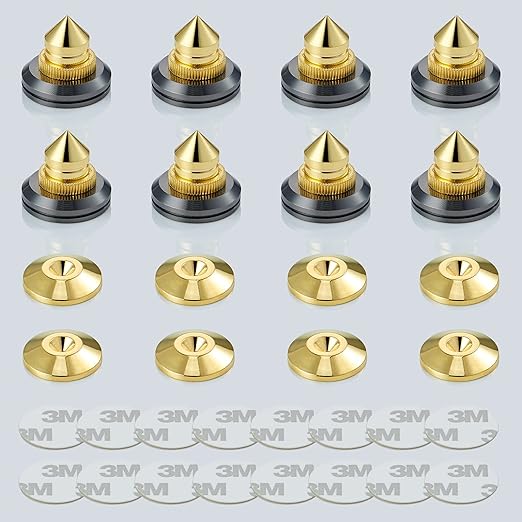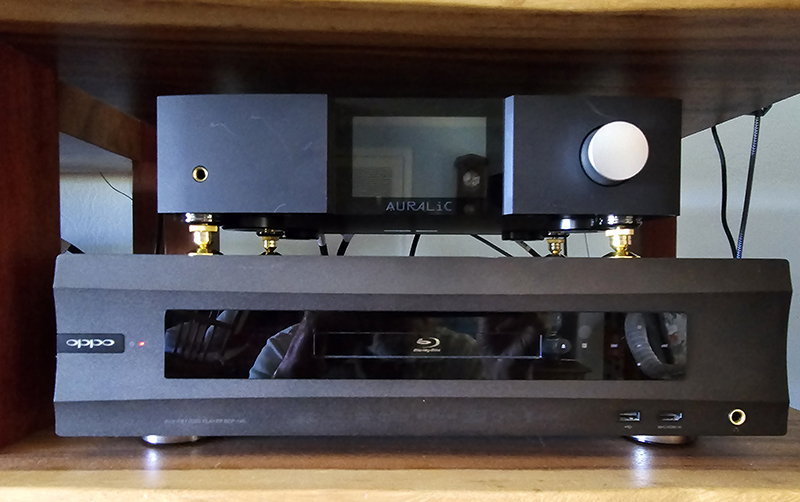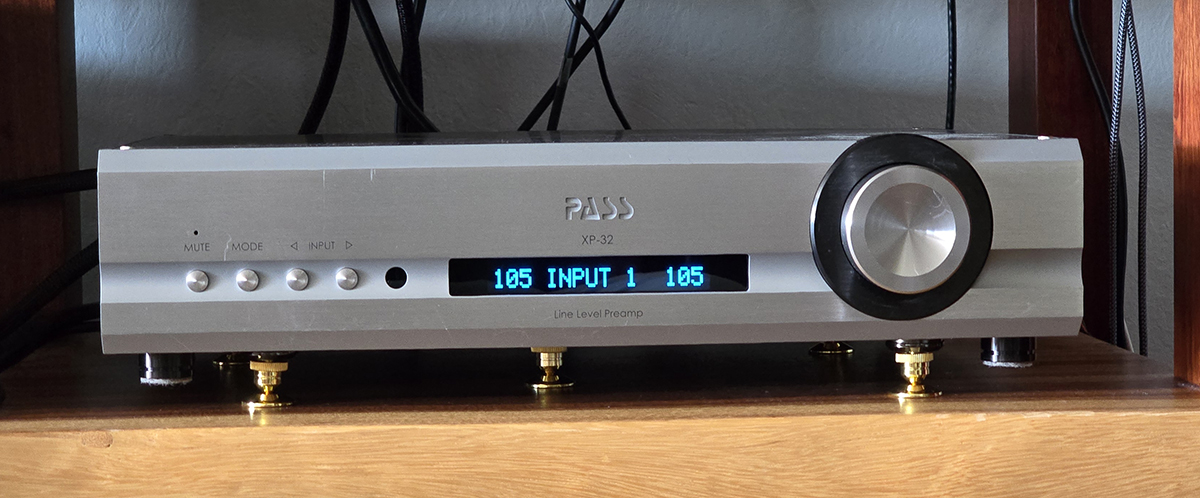My audio components stay on in standby mode, and they get warm. They get warmer when I turn them fully on. I used felt pads to separate them, but that does not give them enough space.
Speaker spikes are generally not very attractive because they sit on the bottom of speakers where they are not visible.
I found these on Amazon, and they are really pretty. Gold-colored with adjustable height. $25 for a set of eight. This is exactly what I was looking for to separate my warm hi-fi components from one another.
Here is a direct link. (We do not make any commission on sales.)
This photo shows one of them in my hand for relative size. The dark disc at the top goes against the bottom of the component, and the point of the spike is set within the center of the indented disc. The bottom of the indented disc is placed on the surface of whatever is underneath the component, be it another component or the surface of your hi-fi rack (or on the floor if you were using them as speaker spikes).
For use, you hold them in one hand with the indented disc at the bottom and the spike above it and slide it underneath one corner of the component you wish to separate from whatever is underneath it. Then, you lift another corner and slide another spike and disc underneath. It is kind of tricky to get them to stay in place when you slide the next one underneath, so have your spouse or friend slide them under while you hold the component up and level. Or, have them hold the component level, and you slide them underneath. It is important to keep the top component level, but also close enough to the spikes that they do not fall over. Once they are underneath, you can adjust the height so they are all tight by turning the knurled dial counter-clockwise to increase the height.
I used an extra one underneath the center of one of the components, so obviously I bought more than one set. This is because the component is heavy.
In the photo below, I used them to separate a Pass Labs XP-32 Preamplifier chassis on the top (there are three chassis in this component) from a Pass Labs XP-27 Phono Preamplifier signal path stage on the bottom (this component has two chassis). Both of these components become quite warm during use and noticeably warm in standby mode. So, separating them allows for more air circulation between them. You can see all five spikes. Click on the photos to see full-sized images.
In the photo shown below, I used four spikes to separate an AURALiC ALTAIR G1 Digital Audio Streamer from an OPPO BDP-105 Disc Player underneath. Since it is smaller than the Pass Labs components, I only needed four; none was needed for the center.
With the main Pass Labs XP-32 chassis, I used five spikes, separating the chassis from the shelf to allow for ventilation.
So, they look great and function great!
Heat bad. Spikes good.






